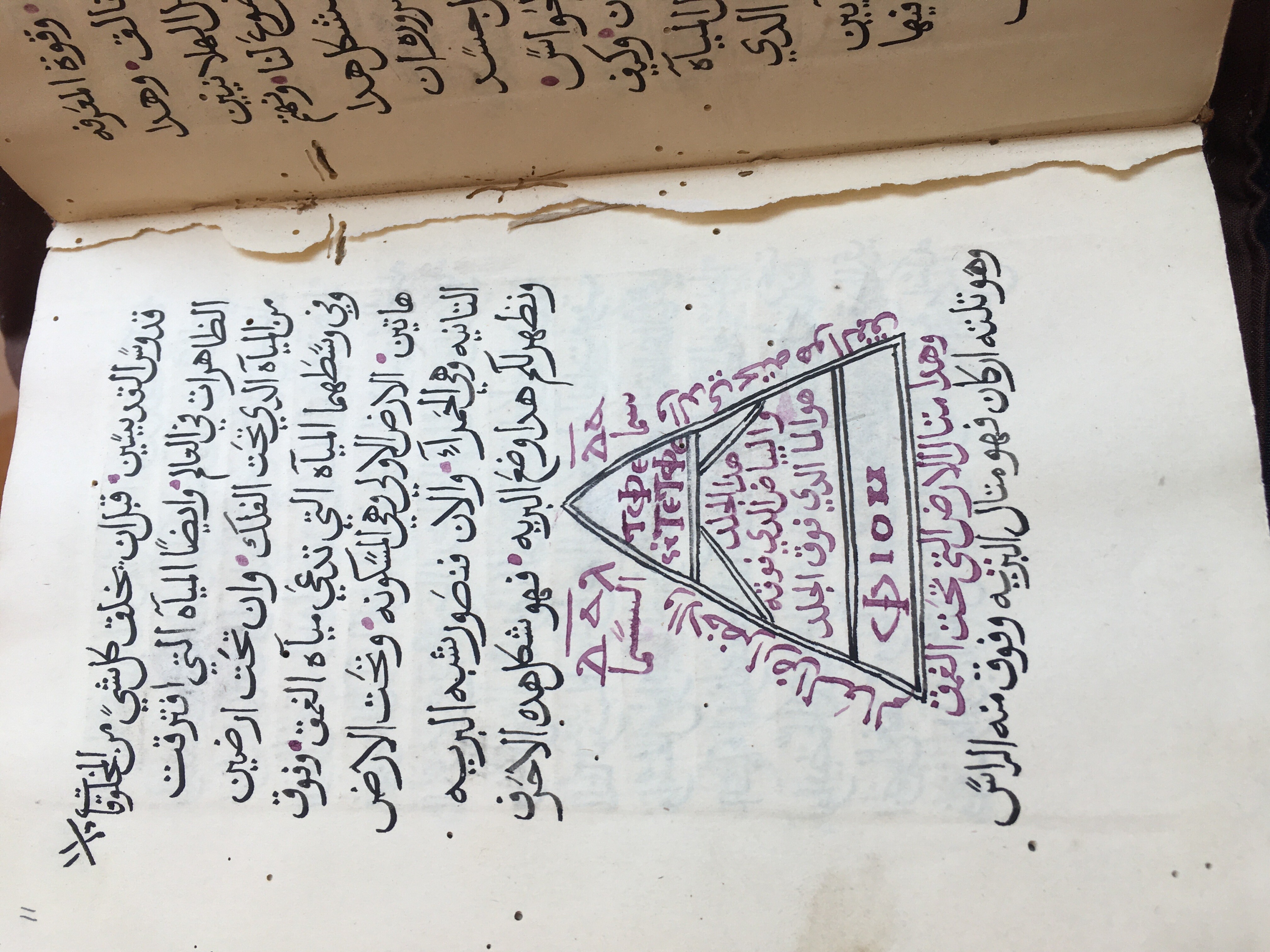Beinecke Coptic MS 13: The Book of the Coptic Language
The Treatise on the Mystery of Letters is a tractate attributed to Apa Seba (supposedly Sabbas the Sanctified, a monk and founder of several convents, who died in 532CE) interpreting the meaning of twenty-two letters of the Greek alphabet in relation to Christian Biblical traditions. The author begins by telling his readers how he contemplated the Biblical verse ‘I am the Alpha and the Omega’ spoken by Christ in Revelation 22:13. He then develops his interpretation of the letters, each representing one of the twenty-two works of creation and one of the stations in the life of Christ. The author of the tractate bases his interpretation of the hidden meaning of the letters only on the geometrical shape of their written form in Greek majuscules. The Treatise is extant in three Greek manuscripts (Oxford, Bodleian Library MS. Barocci 197, Bodleian MS. Laud Gr. 29, and Paris, BnF Grec 2314), one bilingual Coptic and Arabic Codex (Bodleian MS. Huntington 393), as well as in Greek and Coptic fragments, all copied between the 14th and 16th century. The Greek versions and the Coptic version have been edited (see bibliography below).
The Beinecke Library holds a heretofore unknown version of the Treatise on the Mystery of Letters copied in 1886, some three centuries later than any other extant manuscript. Beinecke manuscript Coptic MS 13, catalogued as the “Book of the Coptic language… about the hidden mystery contained in these letters,” is the first and so far only known monolingual Arabic version of the Treatise. However, the title as presented in the catalogue is not found in the manuscript itself and the cataloguing as a Coptic manuscript is misleading, as the text’s main language is Arabic and the letters described are Greek. In addition to the three Greek manuscripts and the bilingual Coptic-Arabic codex, this means that we now have another, independently translated Arabic manuscript (Beinecke Coptic MS 13) and potentially its Vorlage to consider when discussing the reception of this treatise. The Treatise now appears to have been a rather widely read text which can boast of a continuous manuscript tradition of at least five hundred years, likely longer, considering that the Greek versions are all relatively late in relation to the hypothesized original date of composition in the 6th century CE.

Beinecke Library, Coptic MS 13, fol. 11r. One of the drawings of the letter Delta illustrating the different “layers” of the cosmos, including the highest sky, the earth, the depths, etc.

Beinecke Library, Coptic MS 13, fol. 17v. Several letters and how they illustrate different acts of creation: The Theta (top left) is the sea, the Iota (top middle) stands for the sprouting of plants and the Kappa (top right) is an image for the sprouting of the fruit-bearing trees. The shape of the Lambda (bottom left) imitates the rays of sunshine falling onto the earth.
The Arabic version offered in Coptic MS 13 generally agrees with the Arabic version found in the bilingual Bodleian manuscript Huntington 393. However, Coptic MS 13 appears to contain the “entire” treatise of the letters as found in the Greek versions whereas Huntington 393 breaks off about three quarters of the way through the treatise (after 35 out of 42 chapters). Nearly every paragraph of the treatise as found in Coptic MS 13 has a corresponding section in the other manuscript. Overall, the two versions largely agree on the content and only differ in some details and often in the choice of words. Another feature which is strikingly similar between the different versions is the drawings; both Arabic versions include illustrations of the letters discussed, decorated in a way that further illustrates their interpretation.
Whatever the exact relationship between these two manuscripts might be, I think the fact that a second and textually independent Arabic version of the Treatise on the Mysteries of Letters has now come to light underscores that this text might have been accessed by a much larger audience than assumed until now. That it was copied in the 19th century points to a continuous tradition of engagement spanning several languages and several centuries. This discovery leaves us with the question: Why was this rather obscure text likely from the 6th century still appealing to readers in the 19th?
Ramona Teepe
October 1, 2021
Selected Bibliography
BANDT, Cordula. Der Traktat “Vom Mysterium Der Buchstaben”. Kritischer Text Mit Einführung, Übersetzung Und Anmerkungen. Berlin/New York: W. De Gruyter, 2007. [Edition of the Greek versions]
HEBBELYNCK, Adolphe. “Les mystères des lettres grecques d’après un manuscrit copte-arabe de la bibliothèque bodléienne d’Oxford. Texte copte, traduction, notes.” Le Muséon 19 (1900): 5–36, 105–136, 269–300; Le Muséon 20 (1901): 5–33, 369–414. [Edition of the Coptic version]
PARAMELLE, Joseph. “Le Mystère des Lettres Grecques.” Annuaire École Pratique des Hautes Études (Ve Section) 88 (1979–80): 385–386.
SAMIR, Khalil. “Mysteries of Greek Letters.” In Coptic Encyclopedia, vol. 6, 1749–1750. New York: Macmillan, 1991.
URI, Joanne. Bibliothecæ Bodleianæ Codicum Manuscriptorum Orientalium, Videlicet Hebraicorum, Chaldaicorum, Syriacorum, Æthiopicorum, Arabicorum, Persicorum, Turcicorum, Copticorumque Catalogus. Vol. 1. Oxonii: E Typographeo Clarendoniano, 1787.
Yale University Library Catalogue. “Kitab al-lughah qubtiyah …”, https://search.library.yale.edu/catalog/12996707.
Links to referenced manuscripts
Oxford, Bodleian Library MS. Barocci 197, fol. 631r–663v
Oxford, Bodleian Library MS. Laud Gr. 29, fol. 4r–50v
Paris, Bibliothèque nationale de France (BnF) Grec 2314, fol. 323r–343v
View the author’s bio.
Return to the Hidden Gems homepage.
